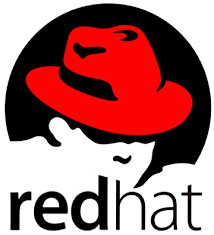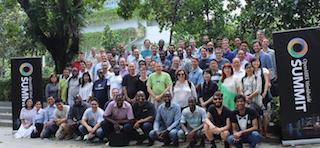Application Programming Interfaces (APIs)
See the following -
Precision Medicine: Analytics, Data Science and EHRs in the New Age
The promise of genomics and personalized care are closer than many realize. But clinical systems and EHRs are not ready yet. While policymakers and innovators play catch-up, here’s a look at what you need to know. Considering how fast technology advances in the healthcare industry, it seems natural that a once-innovative concept could become obsolete in the span of, say, a dozen years. Knowledge, comprehension and capabilities continue moving forward, and if the instruments of support don't keep pace, it can cause a rift to appear. If nothing is done, it can exacerbate into a seismic event...
- Login to post comments
Pressbooks working with Ryerson University on eCampusOntario grant: “Open Publishing Infrastructure”
 We are very very excited to announce that we’re working with eCampusOntario and Ryerson University to improve Pressbooks as an Open Textbook authoring tool, under the just-announced eCampusOntario project: “Open Publishing Infrastructure for Ontario Post-Secondary Educators, Learners.” Most of the development work we undertake under this grant will be released as open source improvements to the Pressbooks GPL codebase — so anyone using Pressbooks will benefit...
We are very very excited to announce that we’re working with eCampusOntario and Ryerson University to improve Pressbooks as an Open Textbook authoring tool, under the just-announced eCampusOntario project: “Open Publishing Infrastructure for Ontario Post-Secondary Educators, Learners.” Most of the development work we undertake under this grant will be released as open source improvements to the Pressbooks GPL codebase — so anyone using Pressbooks will benefit...
- Login to post comments
Public APIs Getting Ready For Prime Time
At the American Medical Informatics Association's annual symposium today, developers and backers of public application programming interfaces talked about how the standard could speed interoperability with add-on apps to enterprise EHRs, and help make those bulky systems more nimble...
- Login to post comments
Red Hat Powers New Generation of High-Performance Virtualization Based on Open Standards with Red Hat Virtualization 4
 Red Hat, Inc., the world's leading provider of open source solutions, today announced the general availability of Red Hat Virtualization 4, the newest release of its Kernel-based Virtual Machine (KVM) -powered virtualization platform. Red Hat Virtualization 4 challenges the economics and complexities of proprietary virtualization solutions by providing a fully-open, high-performing, more secure, and centrally managed platform for both Linux- and Windows-based workloads. It combines a powerful updated hypervisor, advanced system dashboard, and centralized networking for users’ evolving workloads...
Red Hat, Inc., the world's leading provider of open source solutions, today announced the general availability of Red Hat Virtualization 4, the newest release of its Kernel-based Virtual Machine (KVM) -powered virtualization platform. Red Hat Virtualization 4 challenges the economics and complexities of proprietary virtualization solutions by providing a fully-open, high-performing, more secure, and centrally managed platform for both Linux- and Windows-based workloads. It combines a powerful updated hypervisor, advanced system dashboard, and centralized networking for users’ evolving workloads...
- Login to post comments
Report on ONC's Public Health Data Systems Hearing: Ensuring a Data-Driven Response to COVID-19
 As part of HHS's response to President Biden's Executive Order on Ensuring a Data-Driven Response to COVID-19 and Future High-Consequence Public Health Threats, ONC's Health Information Technology Advisory Committee (HITAC) recently held an expert panel hearing to understand the performance of public health data systems during the COVID-19 pandemic response and other gap areas in current infrastructure ... Forthcoming recommendations from the Public Health Data Systems Task Force will identify and prioritize policy and technical gaps to be addressed in order to help ensure a more effective response to future public health threats. These recommendations are expected to be issued later this summer.
As part of HHS's response to President Biden's Executive Order on Ensuring a Data-Driven Response to COVID-19 and Future High-Consequence Public Health Threats, ONC's Health Information Technology Advisory Committee (HITAC) recently held an expert panel hearing to understand the performance of public health data systems during the COVID-19 pandemic response and other gap areas in current infrastructure ... Forthcoming recommendations from the Public Health Data Systems Task Force will identify and prioritize policy and technical gaps to be addressed in order to help ensure a more effective response to future public health threats. These recommendations are expected to be issued later this summer.
- Login to post comments
Report on the ONC 2017 Technical Interoperability Forum
 Last week I attended with my colleague Mike Berry the ONC 2017 Technical Interoperability Forum. This meeting was convened under the 21st Century Cures Act passed by Congress in late 2016. Several hundred participants attended a series of panel presentations and discussions. The forum took place over one-and-a-half-days. The forum covered a variety of topics related to interoperability, including discussion of the business case for interoperability, semantics, national networks, and application programming interfaces (APIs). In many ways the speakers were “the usual suspects” involved in national networks, standards development, and HIE planning and implementation.
Last week I attended with my colleague Mike Berry the ONC 2017 Technical Interoperability Forum. This meeting was convened under the 21st Century Cures Act passed by Congress in late 2016. Several hundred participants attended a series of panel presentations and discussions. The forum took place over one-and-a-half-days. The forum covered a variety of topics related to interoperability, including discussion of the business case for interoperability, semantics, national networks, and application programming interfaces (APIs). In many ways the speakers were “the usual suspects” involved in national networks, standards development, and HIE planning and implementation.
- Login to post comments
Sending Medicaid to the Cloud
Led by Wyoming, states are ready to pioneer MMIS as a service. The Wyoming state government already has considerable experience with cloud-based services. It uses Google Apps for Government, NEOGOV for human resources and is looking at Salesforce.com for customer relationship management. But as its Department of Health prepares to issue an RFP to replace its Medicaid Management Information System (MMIS), all eyes in the Medicaid IT sector are on Wyoming because it will be the first time a state has tried to move away from an expensive custom-developed system to an MMIS-as-a-service approach.
- Login to post comments
SMART Health IT Project Releases Update to Its App Gallery
The SMART Health IT Project has developed an updated version of its app gallery, enabling those looking for apps based on the Fast Healthcare Interoperability Resources to have an easier time looking and comparing. The Computational Health Informatics Program at Boston Children’s Hospital unveiled the refreshed gallery as a beta release at this week’s HIMSS17 conference and is now live... In June 2016, the Office of the National Coordinator for Health Information Technology awarded SMART Health IT a grant to support enhancement of the SMART App Gallery...
- Login to post comments
Socrata Partners With Ethos To Deliver Government Open Performance Solution In The United Kingdom And Europe
Socrata, a Seattle and London-based, open government, open data, and open performance solutions company, has announced a strategic partnership with UK headquartered, Ethos, the leading provider of “Smart City” solutions. Together, Socrata and Ethos will partner to deliver an open performance solution specifically designed to create measurable outcomes for cities and municipalities in the United Kingdom and throughout Europe.
- Login to post comments
Stakeholders Look to Improve C-CDA as FHIR Matures
As the healthcare industry continues to wrestle with interoperability challenges, two standards are poised to play a central role in facilitating the electronic exchange of health information—one is a blunt tool for data sharing, while the other is a surgical instrument. First adopted in 2012 as part of the Office of National Coordinator for Health IT’s 2014 Edition final rule, the Consolidated Clinical Document Architecture (C-CDA) version 1.1—developed through the joint efforts of ONC and Health Level Seven (HL7) International—is now widely used among healthcare providers...
- Login to post comments
Stakeholders To ONC: No One Architecture Perfect For EHRs, Data Sharing
Interoperability is a major part of Stage 3 of Meaningful Use, but the timeframes may be too short to transition from current Consolidated Clinical Document Architecture (C-CDA) used in Stage 2 to the application program interfaces (APIs) and proposed HL7 Fast Healthcare Interoperability Resources (FHIR) Standard for Stage 3, according to vendors and stakeholders speaking at a recent joint Health IT Policy and Standards Committee listening session...
- Login to post comments
Team Bahmni at the OpenMRS Worldwide Summit
 ThoughtWorks first began contributing to OpenMRS in 2006 and since that time, we've had over fifty committers to OpenMRS in GitHub. Incidentally, one in every seven OpenMRS contributor in GitHub is a ThoughtWorker! Naturally, in 2013, when we had the opportunity to build Bahmni, an open source hospital information system, we choose OpenMRS as the underlying Electronic Medical Records System (EMR). Bahmni leverages the mature data model and APIs of OpenMRS, whilst providing an out-of-the-box system that can be immediately used by hospitals.
ThoughtWorks first began contributing to OpenMRS in 2006 and since that time, we've had over fifty committers to OpenMRS in GitHub. Incidentally, one in every seven OpenMRS contributor in GitHub is a ThoughtWorker! Naturally, in 2013, when we had the opportunity to build Bahmni, an open source hospital information system, we choose OpenMRS as the underlying Electronic Medical Records System (EMR). Bahmni leverages the mature data model and APIs of OpenMRS, whilst providing an out-of-the-box system that can be immediately used by hospitals.
- Login to post comments
Team Demonstrates Digital Health Platform for Department of Veterans Affairs
 “Liberate the data.” That was a principal design goal for a team of public-private health care technology collaborators established by the U.S. Department of Veterans Affairs and Veterans Health Administration to develop a working and scalable proof-of-concept digital health platform (DHP) to support the department’s long-term vision. The open-source project demonstrated both proven and emerging technologies for interoperability and advanced functionality innovations from both the public and private sectors...
“Liberate the data.” That was a principal design goal for a team of public-private health care technology collaborators established by the U.S. Department of Veterans Affairs and Veterans Health Administration to develop a working and scalable proof-of-concept digital health platform (DHP) to support the department’s long-term vision. The open-source project demonstrated both proven and emerging technologies for interoperability and advanced functionality innovations from both the public and private sectors...
- Login to post comments
The Cryptocurrency Open Source API Marketplace for Developers
The API economy is the reality we live in and it’s an enormous one that, once the Internet of Things kicks into full gear, will feature an infinite number of API calls a day. But as we globalize, the world and the products—in this case APIs—we sell in it become more complicated and often more expensive as we factor in all the friction of exchange rates and credit card micropayments. It’s in everybody’s interest to smooth over that friction so developers can access our APIs or application programming interfaces more easily. To achieve that could require a change in the way we handle API monetization; something that should be done now before the API economy blows up more than ever before...
- Login to post comments
The HITECH Era in Retrospect
At a high level, the Health Information Technology for Economic and Clinical Health (HITECH) Act of 2009 accomplished something miraculous: the vast majority of U.S. hospitals and physicians are now active users of electronic health record (EHR) systems. No other sector of the U.S. economy of similar size (one sixth of the gross domestic product) and complexity (more than 5000 hospitals and more than 500,000 physicians) has undergone such rapid computerization...
- Login to post comments